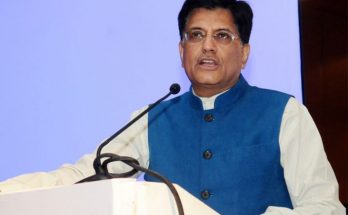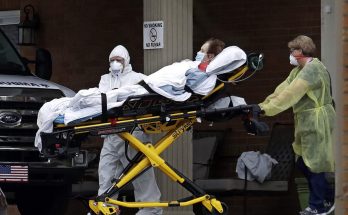 In a spectacular strike on the security forces, cadres belonging to the CPI-Maoist ambushed a large team of police and paramilitary forces and killed 14 personnel of the CRPF in Sukma district of Chhattisgarh in December 2014. Ironically, two days before the attack, Chief Minister Raman Singh had declared that, “The day is not far when the state and Centre will together wipe out the Maoist menace and succeed in making Chhattisgarh Naxal-free.”
In a spectacular strike on the security forces, cadres belonging to the CPI-Maoist ambushed a large team of police and paramilitary forces and killed 14 personnel of the CRPF in Sukma district of Chhattisgarh in December 2014. Ironically, two days before the attack, Chief Minister Raman Singh had declared that, “The day is not far when the state and Centre will together wipe out the Maoist menace and succeed in making Chhattisgarh Naxal-free.”
The Sukma attack has punctured such optimistic assessments. It was by far the gravest attack since the BJP-led NDA government assumed power in New Delhi in May 2014. The previous major attack targeting the security forces had occurred on 11 May 2014 in Maharashtra in which seven C-60 police commandos had been killed when Maoists blew up a police vehicle in Gadchiroli district. Between June and November 2014, the average monthly fatalities among the security forces was less than three – a comforting, yet complacency-inducing figure. The extremists, on the other hand, had suffered 56 fatalities during the period.
Extremism-related fatalities usually decline during the monsoon, which compels both the extremists and the security forces to scale down their operations. In addition, the CPI-Maoist was rocked by a number of high profile surrenders of some of its leaders. This led to the further extension of the lean period of Maoist violence in 2014. In the first 10 months of 2014, 472 Maoist cadres surrendered, compared with 283 in 2013. In his statement on the Sukma attack in Parliament, the Home Minister referred to the success achieved by Chhattisgarh in terms of the record surrender of the extremists, which has led to a weakening of the “morale of the Maoists”. The adverse operational impact of the recent desertions from the so-called revolutionary path has been acknowledged by the Maoists.
Maoists have overcome reverses
In the wake of the Sukma attack, it is apparent that the CPI-Maoist’s weather- and surrender-induced operational frailty is a matter of the past. While it is convenient to interpret the Chhattisgarh attack as an aberration and a desperate attempt by a dying outfit to prove a point, a range of indicators – the continuing recruitment of cadres, organisation of training camps, people’s courts, and the outfit’s foray into new states such as Kerala – underline the fact that the Sukma attack could be the beginning of the rejuvenation of left-wing extremism (LWE).
Chief Minister Raman Singh had claimed on 30 November 2014 that “Central security forces, state police jawans and officers are fighting the menace of Naxalism with better coordination on every front.” In sharp contrast, only a few days earlier, the CRPF chief had accused the Chhattisgarh and Jharkhand governments of underutilising the central forces. Be that as it may, the CRPF, designated as the primary counter-insurgency force of the country over a decade ago, needs better leadership. The force has consistently fallen short in the provision of even basic logistics support to its personnel engaged in counter-insurgency operations. The modernisation plans of the state police forces are also continuing to stagnate.
Need for a Comprehensive Strategy
Maoist attacks on the security forces and the symbols of state power are characterised by meticulous planning, systematic preparation, near-surgical execution and a high degree of coordination. On several occasions, the rebels have achieved considerable success in launching synchronised attacks on multiple targets involving large numbers of cadres. For the Maoists, besides waging a protracted people’s war with the ultimate objective of capturing or seizing political power, participating in a peace process and talks is a ‘tactic’ and considered ‘war by other means’.
The response of various state governments and the Centre is invariably reactive. While the Maoists have been expanding to newer areas and have been steadily enhancing their military capabilities, counter-Naxal operations have mostly been lackadaisical. The reasons for this apathetic approach are three-fold. Firstly, Naxal terrorism is not an emotive issue at the national level like the insurgency in Jammu and Kashmir. Secondly, there is some confusion about whether the Naxalites are terrorists or not as they have a ‘social justice’ tag attached to them. And, lastly, an impression has gained currency that the Naxal menace is not “as bad as the media makes it out to be.”
Coordination between the police and intelligence agencies of various affected states has been generally unsatisfactory. The acquisition, compilation, collation, analysis, synthesis and dissemination of intelligence are inadequate. The Naxalites are continuing to spread their tentacles and it is crucial that intelligence about their activities, arms and equipment, training, sources of funding and future operations is shared on a daily basis so that it trickles down in near real-time to the functional level. A national-level data base of all terrorist groups and individuals is an inescapable operational necessity.
State police forces and the Central armed police forces (CAPFs) need to be better equipped and trained like the army to successfully combat the serious threat posed by the Naxalites. At present they lack the army’s organisational structure and cohesiveness, the army’s institutionalised operational experience and ethos and its outstanding junior leadership – qualities that are mandatory for success in counter-insurgency operations. A great deal more needs to be done if the states are to effectively coordinate anti-Maoist operations across their borders.
The Maoist threat presents a clear and present danger. So far the national response has been inadequate, both at the policy formulation and execution levels. To cope with this serious threat, India needs a well-deliberated and finely calibrated strategy with matching operational doctrines and the allotment of necessary resources. Only a skilfully planned and coordinated strategy, with all stakeholders pooling in their resources to achieve synergy in execution, will achieve the desired results. At the same time, a comprehensive socio-economic strategy must be evolved to treat the root causes of this malaise that is gnawing away at the nation’s innards, along with a carefully drawn up plan for perception management. Good governance, development, security and perception management must go hand in hand.
Gurmeet Kanwal is former Director, Centre for Land Warfare Studies, New Delhi.
Bibhu Prasad Routray served as a deputy director in the National Security Council Secretariat, New Delhi.
Views expressed are of the author and do not necessarily reflect the views of the IDSA or of the Government of India.
Gurmeet Kanwal and Bibhu Prasad Routray
Author Profile
- India Writes Network (www.indiawrites.org) is an emerging think tank and a media-publishing company focused on international affairs & the India Story. Centre for Global India Insights is the research arm of India Writes Network. To subscribe to India and the World, write to editor@indiawrites.org. A venture of TGII Media Private Limited, a leading media, publishing and consultancy company, IWN has carved a niche for balanced and exhaustive reporting and analysis of international affairs. Eminent personalities, politicians, diplomats, authors, strategy gurus and news-makers have contributed to India Writes Network, as also “India and the World,” a magazine focused on global affairs.
Latest entries
 DiplomacyApril 10, 2024Diplomat-author Lakshmi Puri pitches for women power at LSR
DiplomacyApril 10, 2024Diplomat-author Lakshmi Puri pitches for women power at LSR India and the WorldApril 6, 2024UN envoy pitches to take India’s solutions to the world stage
India and the WorldApril 6, 2024UN envoy pitches to take India’s solutions to the world stage CultureApril 5, 2024Youth in Diplomacy: Making it Matter with LSR Model UN 2024
CultureApril 5, 2024Youth in Diplomacy: Making it Matter with LSR Model UN 2024 India and the WorldMarch 28, 2024India to China: Normalization of troops deployment imperative for restoring ties
India and the WorldMarch 28, 2024India to China: Normalization of troops deployment imperative for restoring ties







